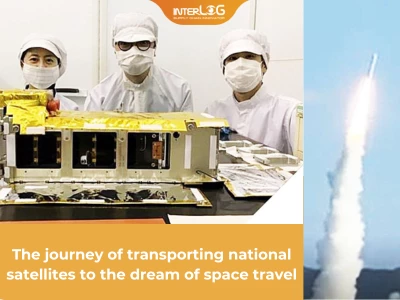


Vietnam launches radar technology into space for the first time
To implement this plan, in 2023, the Vietnam National Space Center closely monitored the progress of developing Vietnam's first radar satellite project. Currently, LOTUSat-1, the first radar technology satellite, is being finalized and is expected to be launched into orbit in early 2025 with an operational time of 5 years in orbit.
According to Dr. Le Xuan Huy, Deputy Director General of the Vietnam National Space Center said: "Unlike optical satellites, radar satellites can take pictures in all weather conditions, especially when it is cloudy, foggy, and low light conditions. We expect data provided from this radar satellite will contribute significantly to Vietnam, given the climate environment with many clouds. " In addition, the satellite is expected to provide images in 3 shooting modes: point shoot, strip shoot and scan shoot, with a spatial resolution of 1m or less, 2m or less and 16m or less respectively.
Since 2006, the Vietnam National Space Center under the Vietnam Academy of Science and Technology (VAST) with support from the Japan Aerospace Exploration Agency (JAXA), engineers have researched, developed three "Made in Vietnam" pico-satellites including PicoDragon, Nano Dragon and MicroDragon. The satellites were also successfully launched into orbit with support from JAXA.
Especially, one of the 3 Made in Vietnam satellites - Nano Dragon, was entrusted by the Vietnam National Space Center to InterLOG Corporation for transportation duties. This satellite of Vietnam was transported to Japan to embark on its space journey in the morning of November 9, 2021 at the Uchinoura Space Center launch site, Kagoshima prefecture, southern Japan. In this project, transportation was not simple as this is a special device, especially the customs procedures and selecting the safest airline for a device with a battery. In Vietnam, as the main responsible unit, InterLOG experts conducted consultations, risk analysis and proposed the most optimal solutions during the extremely complex Covid-19 pandemic period. InterLOG consulted on customs procedures in Vietnam and Japan, transportation methods to the cargo warehouse at Narita airport, cost consulting and taxes at both customs for the Vietnam National Space Center to ensure the satellite could arrive safely and fulfill its mission.

Accordingly, after being consulted and provided with a specific transportation route by InterLOG experts, the Vietnam National Space Center agreed to transport the NanoDragon satellite weighing 3.8kg with standard 3U size (100 x 100 x 340.5 mm) by air to Japan. On August 17, 2021, the satellite was successfully handed over to Japan and after nearly 3 months going through the strictest procedures, the satellite was qualified to be launched into space in the morning of November 9, 2021 in Japan.
Through this project, the Vietnam National Space Center also highly appreciated InterLOG's logistics and supply service capabilities in successfully transporting the NanoDragon satellite to Japan, and wished to continue cooperating on future transportation projects.
.png)
In addition to satellite manufacturing, the ground station system for satellite operation is being built and will be fully installed by September 2024 at the Vietnam National Space Center, Hoa Lac facility. Training courses and technology transfers for processing radar satellite images have been prepared in terms of technology and human resources so that when the satellite is launched into orbit, the data can be exploited effectively to serve units using the satellite's image data in the future.
Dr. Le Xuan Huy said that in recent years Vietnam has implemented many space technology human resource training courses. Hundreds of data processing and satellite image application experts, especially radar satellites, have been trained in both Japan and Vietnam through classes organized in the Vietnam National Space Center Project. In addition, engineers in technology design have also been trained from basic to advanced levels at satellite manufacturing plants in Japan. The strategy for developing and applying space science and technology until 2030 will widely apply the achievements of scientific and technological advances, with focused investment, with the aim of minimizing damage from natural disasters and providing diversified services for people.


